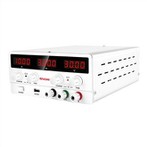Methods and Steps to Judge the Rotation Speed of an Electric Motor Using a Multimeter
An ordinary three-phase squirrel-cage motor has two rotation speeds: One is the synchronous speed N1. The so-called synchronous speed refers to the rotation speed of the rotating magnetic field of the motor. This speed has a strict relationship with the number of pole pairs of the motor, that is, n1 = 60f/p.
Among them, n1 -- synchronous speed, revolutions per minute;
f -- frequency of the current, cycles per second;
p -- number of pole pairs of the motor.
The other is the asynchronous speed, that is, the rotation speed of the motor shaft. When the motor drives the production machinery, the rotation speed of the motor shaft is slightly lower than that of the rotating magnetic field, but the difference is negligible. For example, for a motor with one pair of poles, the rotation speed of the motor pulley is 2950 revolutions per minute; for a motor with two pairs of poles, it is 1430 revolutions per minute; and for a motor with three pairs of poles, it is 920 revolutions per minute. Based on the above principles, a multimeter can be used to determine the number of poles of the motor, and then the rotation speed of the motor can be determined.
Steps to determine the number of pole pairs of the motor using a multimeter:
1. Disconnect the six terminals of the motor.
2. Use the ohm range of the multimeter to find any one of the three-phase windings, such as the terminals 1 to 2 in the figure.
3. Set the milliammeter range of the multimeter to the smallest range and connect its two terminals across the terminals 1 to 2.
4. Slowly rotate the shaft of the motor and observe the change of the pointer of the multimeter. If the pointer swings once when the shaft rotates one circle, it indicates that the current changes for one cycle, which means there is one pair of poles; if it swings twice, there are two pairs of poles; if it swings three times, there are three pairs of poles.






